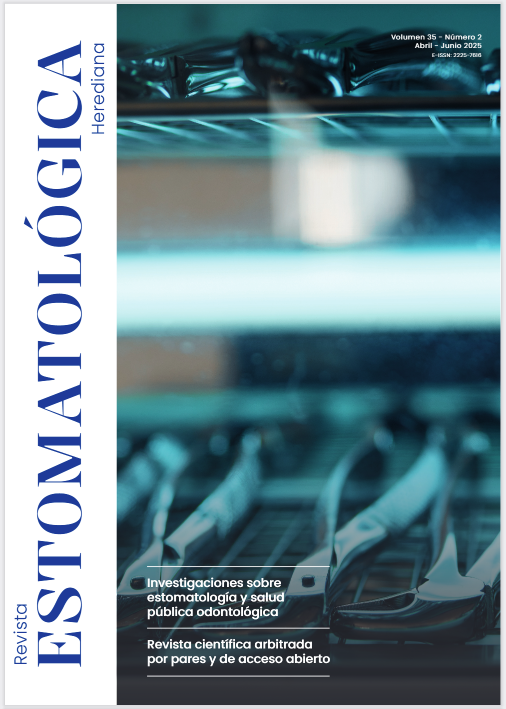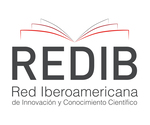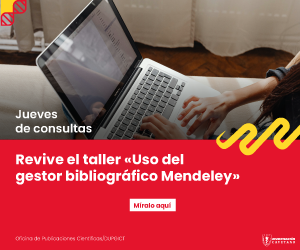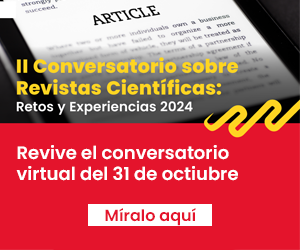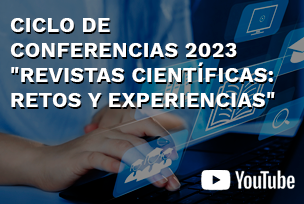Bioactive materials for pulpotomies in primary dentition: literature review
DOI:
https://doi.org/10.20453/reh.v35i2.5751Keywords:
pulpotomy, primary tooth, biocompatible materials, pediatric dentistryAbstract
There is a growing demand for increasingly biocompatible materials, especially for pulp therapies in children. In today's market, biomaterials such as mineral trioxide aggregate (MTA) and Biodentine have demonstrated high bioactive properties. However, no material has yet been identified that optimally meets all clinical requirements, due to factors such as biocompatibility, pulp repair potential, among others. The objective of this literature review was to determine the clinical and radiographic success rate of bioactive materials in pulpotomies, compared to the use of conventional materials. Additionally, the preferred final restorative material used after the application of the bioactive material was identified. PubMed, Scopus, ScienceDirect, Virtual Health Library, EBSCOHost, and ProQuest databases were used. The search included publications up to May 25, 2024, following PRISMA guidelines. Out of a total of 857 articles identified, twelve met the inclusion criteria and were selected for analysis. Subsequently, these studies underwent a control review to evaluate the results of pulp treatment: eleven were considered at the first year of follow-up and only one at the second year. The use of bioactive materials, such as Biodentine and calcium silicate cements, represents a significant advance in dentistry. These materials are easy to handle, set faster, and have a lower risk of discoloration than MTA.
Downloads
References
Costa e Silva LL, Cosme-Silva L, Sakai VT, Lopes CS, Silveira AP, Moretti Neto RT, et al. Comparison between calcium hydroxide mixtures and mineral trioxide aggregate in primary teeth pulpotomy: a randomized controlled trial. J Appl Oral Sci [Internet]. 2019; 27: e20180030. Disponible en: https://doi.org/10.1590/1678-7757-2018-0030
Reynoso NP, Leyda AM, Ribelles M. Pulpotomía en dentición primaria: un análisis bibliométrico de 57 años. Rev Odontopediatr Latinoam [Internet]. 2022; 12(1): e-320333. Disponible en: https://doi.org/10.47990/alop.v12i1.333
Buzo P, Manríquez J, González B, Prieto M, Gutiérrez I, Palacios F. Comparación del uso de formocresol vs. biodentine/MTA en pulpotomías; revisión sistemática. Rev Op Dent Biomater [Internet]. 2021; 10(2): 15-21. Disponible en: https://www.rodyb.com/wp-content/uploads/2021/05/3-formocresol-vs-biodentine-.pdf
Santaella J, Palencia L, Weffer R. Materiales más utilizados en tratamientos endodónticos de dientes primaries. Revisión bibliográfica. RODYB [Internet]. 2021; 10(2): 31-39. Disponible en: https://www.rodyb.com/wp-content/uploads/2021/05/5-materiales-mas-usados.pdf
Cedillo J, Domínguez A, Espinosa R. Materiales bioactivos en odontología restauradora. RODYB [Internet]. 2021; 10(3): 19-29. Disponible en: https://www.rodyb.com/wp-content/uploads/2021/08/3-materiales-bioactivoa.pdf
Abdelwahab DH, Kabil NS, Badran AS, Darwish D, Abd El Geleel OM. One-year radiographic and clinical performance of bioactive materials in primary molar pulpotomy: a randomized controlled trial. J Dent [Internet]. 2024; 143: 104864. Disponible en: https://doi.org/10.1016/j.jdent.2024.104864
Mushtaq A, Nangia T, Goswami M. Comparative evaluation of the treatment outcomes of pulpotomy in primary molars using mineral trioxide aggregate and 3mixtatin: a randomized clinical trial. Int J Clin Pediatr Dent [Internet]. 2023; 16(6): 782-787. Disponible en: https://doi.org/10.5005/jp-journals-10005-2720
Alqahtani AS, Alsuhaibani NN, Sulimany AM, Bawazir OA. NeoPUTTY® versus NeoMTA 2® as a pulpotomy medicament for primary molars: a randomized clinical trial. Pediatr Dent [Internet]. 2023; 45(3): 240-244. Disponible en: https://www.ingentaconnect.com/content/aapd/pd/2023/00000045/00000003/art00008;jsessionid=5r44pmmf58eif.x-ic-live-02
Alnassar I, Altinawi M, Rekab MS, Alzoubi H, Abdo A. Evaluation of the efficacy of mineral trioxide aggregate and bioceramic putty in primary molar pulpotomy with symptoms of irreversible pulpitis (a randomized‐controlled trial). Clin Exp Dent Res [Internet]. 2023; 9(2): 276-282. Disponible en: https://doi.org/10.1002/cre2.700
Hidalgo LR, Almeida-Junior LA, Lucisano Politi MP, Nelson-Filho P, Segato RA, Paula-Silva FW, et al. Randomized clinical study of the use of MTA and BiodentineTM for pulpotomy in primary teeth. Pesqui Bras Odontopediatria Clín Integr [Internet]. 2023; 23: e220024. Disponible en: https://doi.org/10.1590/pboci.2023.081
Hassanpour S, Aminabadi NA, Rahbar M, Erfanparast L. Comparison between the radiographic and clinical rates of success for TheraCal and MTA in primary tooth pulpotomy within a 12-month follow-up: a split-mouth clinical trial. BioMed Res Int [Internet]. 2023; 2023(1): 8735145. Disponible en: https://doi.org/10.1155/2023/8735145
Kiranmayi T, Vemagiri CT, Rayala C, Chandrappa V, Bathula H, Challagulla A. In vivo comparison of bioceramic putty and mineral trioxide aggregate as pulpotomy medicament in primary molars. A 12-month follow-up randomized clinical trial. Dent Res J [Internet]. 2022; 19(1): 84. Disponible en: https://doi.org/10.4103/1735-3327.359322
Eshghi A, Hajiahmadi M, Nikbakht MH, Esmaeili M. Comparison of clinical and radiographic success between MTA and biodentine in pulpotomy of primary mandibular second molars with irreversible pulpitis: a randomized double-blind clinical trial. Int J Dent [Internet]. 2022; 2022(1): 6963944. Disponible en: https://doi.org/10.1155/2022/6963944
Vilella-Pastor S, Sáez S, Veloso A, Guinot-Jimeno F, Mercadé M. Long-term evaluation of primary teeth molar pulpotomies with Biodentine and MTA: a CONSORT randomized clinical trial. Eur Arch Paediatr Dent [Internet]. 2021; 22(4): 685-692. Disponible en: https://doi.org/10.1007/s40368-021-00616-3
Lima SP, Santos GL, Ferelle A, Ramos SP, Pessan JP, Dezan-Garbelini CC. Clinical and radiographic evaluation of a new stain-free tricalcium silicate cement in pulpotomies. Braz Oral Res [Internet]. 2020; 34: e102. Disponible en: https://doi.org/10.1590/1807-3107bor-2020.vol34.0102
Öznurhan F, Kayabasi M, kesküs B. Evaluation of long-term results of two different calcium silicate based materials in primary molar teeth vital pulpotomies: an in vivo study. Cumhuriyet Dent J [Internet]. 2020; 23(1): 45-51. Disponible en: http://dx.doi.org/10.7126/cumudj.648723
Meslmani W, Kouchaji C, Rekab S, Abo Fakher MA, Al Nerabieah Z. The efficacy of Portland cement as a pulpotomy agent in deciduous teeth. Pediatr Dent J [Internet]. 2020; 30(2): 99-105. Disponible en: https://doi.org/10.1016/j.pdj.2020.02.001
Esen M, Guven Y, Seyhan MF, Ersev H, Tuna-Ince EB. Evaluation of the genotoxicity, cytotoxicity, and bioactivity of calcium silicate-based cements. BMC Oral Health [Internet]. 2024; 24: 119. Disponible en: https://doi.org/10.1186/s12903-024-03891-w
Kim B, Lee YH, Kim IH, Lee KE, Kang CM, Lee HS, et al. Biocompatibility and mineralization potential of new calcium silicate cements. J Dent Sci [Internet]. 2023; 18(3): 1189-1198. Disponible en: https://doi.org/10.1016/j.jds.2022.10.004
Downloads
Published
How to Cite
Issue
Section
License
Copyright (c) 2025 Nayda Mirelly Guevara Purizaca, María Elizabeth Cruz Flores, Rosa Josefina Roncal Espinoza, Alfredo Carlos Manuel Rendon Alvarado

This work is licensed under a Creative Commons Attribution 4.0 International License.
The authors retain the copyright and cede to the journal the right of first publication, with the work registered with the Creative Commons License, which allows third parties to use what is published as long as they mention the authorship of the work, and to the first publication in this journal.
